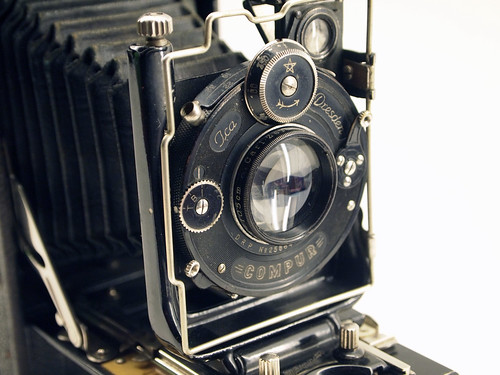It's been two years since I started this blog, partly through a desire to document my renewed interest in film photography, partly to act as a place to collate research into slightly obscure or obsolete technologies and techniques, and as a space to share my results. However, the deciding factor in starting the blog was actually buying my first digital camera in February 2011. This facilitated all the shots of cameras and equipment I'd been doing for
Camera-Wiki (and before that, Camerapedia) but, other than for a few specific purposes, I still prefer to shoot film. I haven't posted as much as I'd have liked, as real life frequently gets in the way: to me, photography sits somewhere between a hobby and a sketchbook for what feels like my 'real' work, which is painting.
Two years into this blog it seemed like a good moment to take stock of the state of the raw material: film. In terms of production, the biggest shock has been the demise of
Fotokemika and its Efke brand of films (and Emaks paper), and what this has meant for the 127 format. This has also affected
Adox, as Fotokemika's factory
used to handle much of Adox's production (although some Adox films are made in-house and are still available). Despite
Kodak's well publicised problems, the company looks like it'll keep going for some time yet
if it concentrates on its film business. Personally, I've never been keen on Kodak films, the only one I've used recently is the long discontinued
Tech Pan - a film I would buy if they still made it. I also rarely shoot colour, but Kodak, along with
Fuji, are the only real contenders in the colour film market. As well as colour, including their instant film, Fuji are still producing their Acros and Neopan black and white films.
The problems at Kodak have some echoes of what happened to
Ilford; however since the management buyout in 2005, as well as continuing their existing film product lines, Ilford/Harman have been in a strong enough position to develop and market new products, notably the
Harman Direct Positive Paper and their first camera in decades: the
Titan pinhole camera. Harman also released
budget 100 and 400 ISO films under the
Kentmere name which they had acquired - and have a hand in the ongoing
Impossible Project.
For the frugal photographer, as well as the Kentmere films mentioned,
Foma reintroduced their 200 speed film to complement their Fomapan 100 and 400 ISO films. I have found Foma's quality control to be erratic at times, and I don't think that the latitude claimed for their 400 speed film stands up to scrutiny, but it does have
a nice tonality and grittiness when exposed properly, and it's cheap.
As well as provding a number of competitively priced films, the prize for broadest product range must surely go to
Maco: under the Rollei/Agfa brands Maco appear to be continually expanding a bewildering array of films. Maco is not a manufacturer of films however: the company repackages and distributes films and emulsions from other manufacturers. For example, their Rollei Retro 100 was the original Agfa APX 100, several million feet of which Maco bought up after AgfaPhoto ceased trading, while other products are made from aerial/surveillance films manufactured by Agfa-Gevaert (a separate company from AgfaPhoto since 2004). There's also a lot of online debate as to whether the RPX 100 & 400 films are the same emulsion as Kentmere 100 and 400, although I haven't been able to find a definitive answer other than that they are coated on the Harman production line, but the RPX films are available in medium format, unlike the Kentmere.
One of the factors that may be helping film production is
Lomography. I have my issues with it on a number of levels: for example, at time of writing their
online shop is offering
expired XP2 for £7.96; new XP2 is £6.52 from
Harmanexpress, and just £4.80 from
Total Blank Media (incidentally, this last website is the cheapest place to buy Ilford films I've found); but if a by-product of the Lomo phenomenon - which essentially has created a market for selling over-priced and substandard products (I have nothing against using cheap plastic cameras, but these should at least be priced to reflect their cheap, plastic qualities) because of some perceived retro lifestyle 'coolness' to using film - adds to demand, then everyone benefits.
In some respects the catastrophe has already happened: the consumer market for photography is essentially digital. Using film is now a concern for amateurs, in the original sense of the word. Inevitably, more products will be discontinued, always frustrating when a particular film or format one loves goes, but in the main, while there is sufficient demand for film itself, one can confidently hope there will be a supply to meet it.












